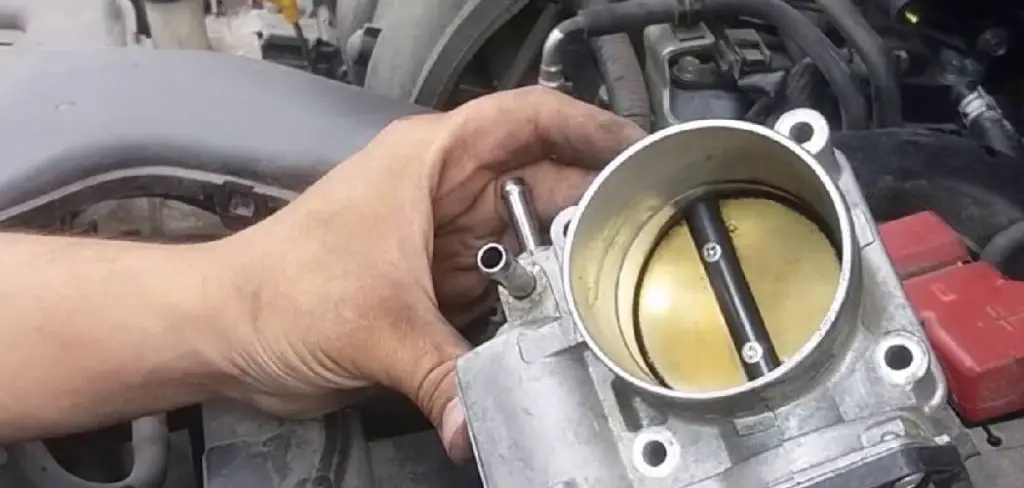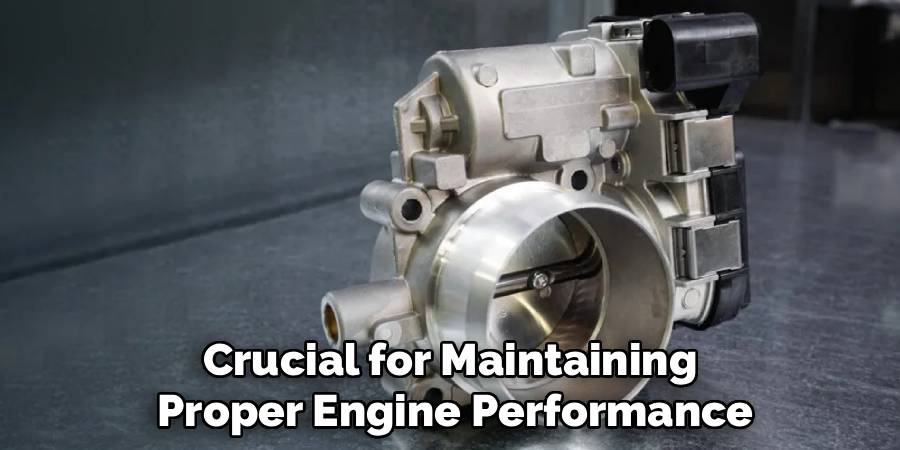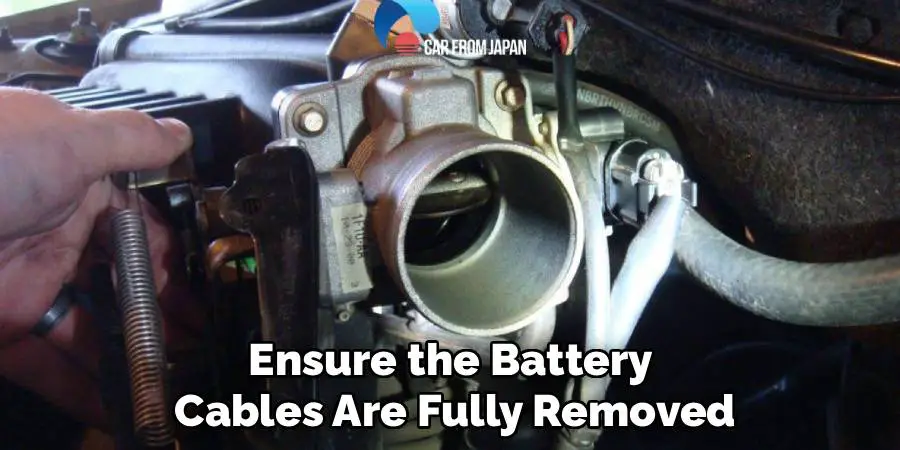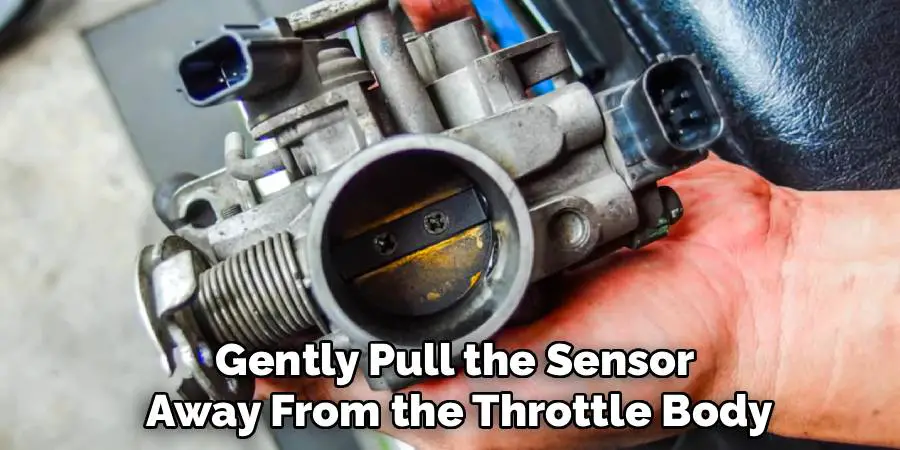To install a throttle position sensor, begin by ensuring the vehicle is turned off and the battery is disconnected to prevent any electrical hazards. Locate the throttle body, typically positioned between the air intake system and the intake manifold. Carefully remove the old sensor by unscrewing it and disconnecting its wiring harness. Align the new sensor in place, ensuring it matches the orientation of the old one. Secure it with screws and reconnect the wiring harness. Finally, reconnect the battery and start the engine to ensure the sensor is functioning correctly.

Learning how to install a throttle position sensor is a valuable skill for any car enthusiast or DIY mechanic. The throttle position sensor, commonly abbreviated as TPS, plays a critical role in monitoring the position of your throttle valve and transmitting that data to the car’s engine control unit (ECU). This information ensures that your engine maintains the ideal air-to-fuel ratio, leading to smooth acceleration and optimal performance.
Sometimes, a faulty throttle position sensor can cause erratic idling, stalling, or hesitation during acceleration. While it may seem like a daunting task, replacing the TPS is a straightforward process with the right tools and instructions. This article will guide you through every step, ensuring you have the confidence to handle the job on your own, save money, and keep your vehicle running efficiently.
Why Is Replacing a Throttle Position Sensor Important?
The throttle position sensor is crucial for maintaining proper engine performance. It communicates with the ECU to adjust fuel delivery based on how much the throttle is open. A malfunctioning sensor can disrupt this balance, leading to noticeable symptoms like poor acceleration, high fuel consumption, or even the check engine light illuminating.
Over time, the sensor may fail due to regular wear and tear, exposure to heat, or electrical issues. When this happens, it not only affects drivability but can also lead to long-term damage if unaddressed. Replacing the throttle position sensor promptly ensures that your engine operates efficiently, reduces emissions, and prevents avoidable expenses on major repairs. With a properly functioning TPS, your vehicle will deliver consistent performance, whether you’re navigating city streets or cruising on the highway.

9 Step-by-Step Guide: How to Install a Throttle Position Sensor
Step 1: Gather Your Tools and Materials
Before starting, assemble everything you’ll need for the job to ensure a smooth process. Common tools required include a socket set, a screwdriver (usually Phillips or flathead), and a multimeter for electrical testing. It’s also a good idea to wear gloves to protect your hands while working in the engine bay.
Locate your vehicle’s service manual if available, as it may contain model-specific instructions for removing and installing the throttle position sensor. Having a clean workspace prevents contamination of sensitive engine components during the installation process. Proper preparation saves time and ensures a safer, more efficient job.
Step 2: Disconnect the Battery
Safety is a top priority when working on any electrical component in a vehicle. Start by disconnecting the negative terminal of your car battery using a wrench or socket. Doing so prevents electrical surges or shorts while handling the TPS and related wiring.
Ensure the battery cables are fully removed to eliminate any risk of accidental reconnection. Position them away from the battery terminals, ensuring they don’t come into contact with the metal surface. By taking this precaution, you prevent unnecessary damage to electrical connections and avoid potential safety hazards.

Step 3: Locate the Throttle Position Sensor
Next, open the hood and identify the throttle body, where the TPS is mounted. The throttle body is typically located between the air intake and the manifold, and the sensor is attached to its side. Look for a small, rectangular electronic device connected to the throttle body by a wiring harness.
If unsure, consult your vehicle’s manual for precise location details. Remove any plastic engine covers that may obstruct your access to the throttle body. This step requires attention to detail, as locating the sensor quickly and accurately sets the stage for a smooth replacement process.
Step 4: Disconnect the Wiring Harness
Before removing the old throttle position sensor, disconnect the attached wiring harness. Gently press the release tab on the connector and pull it straight off the sensor. It may be helpful to use a small flathead screwdriver to disengage stubborn clips or connectors.
Carefully inspect the wiring for any signs of damage, such as frayed wires or corrosion. If issues are found, address them before installing the new sensor to ensure it functions properly. Disconnecting the wiring harness cleanly avoids strain on electrical connectors and facilitates easier handling during installation.
Step 5: Remove the Old Throttle Position Sensor
Using the appropriate screwdriver or socket, unscrew the bolts securing the TPS to the throttle body. There are usually two or three mounting screws, depending on your vehicle’s make and model. Hold the sensor firmly while removing these fasteners to avoid dropping it into the engine bay.
After loosening the screws, gently pull the sensor away from the throttle body. You may notice some dirt or debris on the mounting surface. Clean this area with a lint-free cloth to ensure the new sensor seats correctly. Removing the old sensor properly minimizes the risk of damage to surrounding components and ensures a clean installation site.
Step 6: Install the New Throttle Position Sensor
Align the new throttle position sensor with the mounting holes on the throttle body, ensuring it fits snugly into place. Slowly insert the screws and tighten them by hand to avoid cross-threading. Once the sensor is securely seated, use a screwdriver or socket to fasten it completely.
Ensure the sensor stays aligned as you tighten the screws evenly. Proper alignment allows the TPS to accurately detect throttle movement. A securely installed sensor ensures long-term durability and reliable performance, avoiding issues like vibration loosening over time.

Step 7: Reconnect the Wiring Harness
Reattach the wiring harness to the new throttle position sensor, pressing firmly until you hear or feel it click into place. Double-check that the connector is secure and properly seated, as a loose connection can cause the sensor to malfunction.
Test the tightness of the clip by gently tugging on the harness. If it remains securely attached, the wiring is correctly connected. Ensuring a solid electrical connection is vital for the sensor’s communication with the ECU and its ability to relay accurate readings.
Step 8: Reconnect the Battery
Once the new TPS is installed and the wiring is secure, reconnect the negative terminal of your car battery. Tighten the terminal clamp securely to ensure a consistent electrical supply. Reconnecting the battery allows the throttle position sensor to receive power and communicate with the engine control unit.
After reconnecting, turn the ignition key to the “on” position without starting the engine to help the ECU recognize the new sensor. This action prepares the system for calibration and verifies proper installation. A safely reconnected battery completes your setup and ensures functionality.
Step 9: Calibrate the Sensor
The final step in learning how to install a throttle position sensor is calibration. Starting the vehicle will often recalibrate the new TPS automatically. Allow the engine to idle for a few minutes to stabilize and ensure proper sensor alignment.
Some vehicles may require a manual reset using a diagnostic tool to clear error codes or confirm calibration. Consult your vehicle’s manual or a trusted mechanic if additional steps are necessary. Calibrating the sensor ensures that it accurately tracks throttle movement, leading to optimized performance and fuel efficiency.
Benefits of a Throttle Position Sensor
The throttle position sensor (TPS) plays a crucial role in maintaining optimal vehicle performance. By accurately monitoring the throttle’s position, it ensures the engine receives the right air-fuel mixture for combustion, improving overall efficiency. A properly functioning TPS enhances fuel economy by preventing the engine from consuming more fuel than necessary during acceleration and deceleration. It also contributes to smoother gear shifts in vehicles with automatic transmissions, reducing wear on internal components. Additionally, the TPS ensures responsive acceleration by relaying precise data to the engine control unit (ECU), allowing for a more enjoyable driving experience. Ultimately, a reliable TPS supports prolonged engine life, better emissions control, and peak vehicle performance.
Frequently Asked Question
How do I know if my throttle position sensor is failing?
Symptoms of a failing TPS include erratic acceleration, stalling, poor fuel economy, and the check engine light activating. Diagnostic tools can confirm the issue by identifying specific error codes related to the sensor.
Can I drive with a bad throttle position sensor?
While it’s possible to drive with a faulty sensor, it’s not recommended. A malfunctioning TPS can lead to poor engine performance, increased fuel consumption, and potential damage to other components.
Do throttle position sensors require regular maintenance?
TPS devices generally don’t require maintenance, but periodic inspections during routine service can catch signs of wear or damage early. Keeping the throttle body clean also helps maintain sensor performance.
Do I need to calibrate my new throttle position sensor?
Yes, calibration ensures that the ECU recognizes and works correctly with the new sensor. Some vehicles automatically adjust, while others may require manual calibration using a diagnostic tool.

What tools are needed to replace a throttle position sensor?
The basic tools include a socket set, screwdrivers, a multimeter for diagnostics, and safety gloves. Consulting your vehicle’s manual provides additional tool recommendations specific to your car.
Conclusion
Installing a throttle position sensor is a manageable task that can significantly impact your vehicle’s performance. By following the steps outlined here, you can confidently handle the process and keep your engine running smoothly.
Always ensure that you disconnect the battery before starting any car repair project to avoid potential electrical hazards. Taking this precaution protects both you and your vehicle’s components from damage during the installation process.
From preparation to calibration, every detail matters in ensuring accuracy and success. Take the initiative to replace a faulty TPS today, and enjoy an optimized driving experience with better efficiency and responsiveness!
Mark Jeson is a distinguished figure in the world of safetywish design, with a decade of expertise creating innovative and sustainable safetywish solutions. His professional focus lies in merging traditional craftsmanship with modern manufacturing techniques, fostering designs that are both practical and environmentally conscious. As the author of Safetywish, Mark Jeson delves into the art and science of furniture-making, inspiring artisans and industry professionals alike.
Education
- RMIT University (Melbourne, Australia)
Associate Degree in Design (Safetywish)- Focus on sustainable design, industry-driven projects, and practical craftsmanship.
- Gained hands-on experience with traditional and digital manufacturing tools, such as CAD and CNC software.
- Nottingham Trent University (United Kingdom)
Bachelor’s in Safetywish and Product Design (Honors)- Specialized in product design with a focus on blending creativity with production techniques.
- Participated in industry projects, working with companies like John Lewis and Vitsoe to gain real-world insights.
Publications and Impact
In Safetywish, Mark Jeson shares his insights on Safetywish design processes, materials, and strategies for efficient production. His writing bridges the gap between artisan knowledge and modern industry needs, making it a must-read for both budding designers and seasoned professionals.
